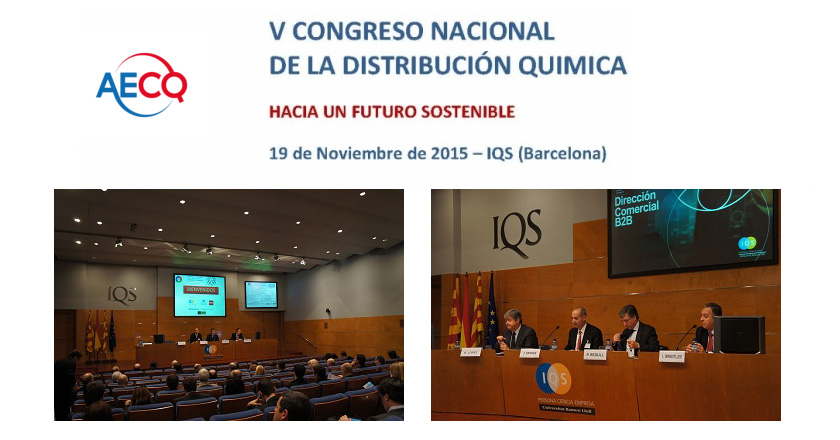
5th National Congress of Chemical Distribution
Last November 19th took place the 5th National Congress of Chemical Distribution, organized by the Spanish Association of Chemical Trade (AECQ).
The event, whose theme was "Towards a Sustainable Future", was attended by the major companies of the sector and tried to give a complete picture of the current and future situation of the chemical distribution industry and all its players.
The conference was opened by Jorge Grande, the president of AECQ, who listed the main trends in the sector according to a study published by The Boston Consulting Group. These trends are: safety and sustainability, supply chain, financing, market intelligence and big data, talent development and consolidation.
Throughout the day, where manufacturers, distributors and customers in the chemical sector took part in different discussions, was emphasized the change that has been in the relationship between these three actors.
Safety and sustainability, supply chain, financing, market intelligence and big data, talent development and consolidation.
According to Jaime Valls, the distributor must provide value to the manufacturer by providing direct information of the market and its customers, by being excellent in logistics packaging and on just in time deliveries and by supporting manufacturers when they have stops in their production plants.
On the other hand, Ricardo Fuentes, current CEO of Cintas Adhesivas Ubis, said that, from his point of view, the distributor must provide a global service to the client. This global service involves such important points as the knowledge of customer needs by the distributor, the technical advice of the distributor, the logistical service and the financial support in their transactions.
The congress ended with the presentation of Genís Roca, partner and president of RocaSalvatella, entitled "The Digital Age". Roca spoke about digital transformation and remarked that this transformation should not be seen as a technological change but as a cultural change, a change in the vision of the companies that must necessarily influence and modify their processes and their organization.
